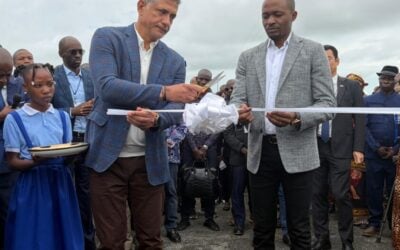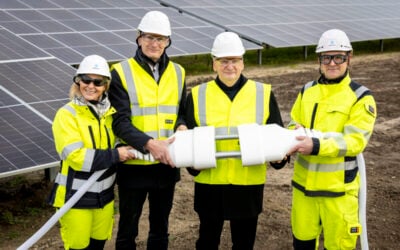Energy storage is one solution to Indonesia’s fragmented grid. Credit: Tom Kenning.
Poor grid flexibility in Indonesia means energy storage could be critical leverage when trying to install solar and wind projects.
Speaking at the Solar & Off-Grid Renewables Southeast Asia event in Bangkok, Andre Susanto, Clean Energy Consultant at Bluejay Energy, said grid management is a challenge in Indonesia, because there are gas turbines and diesel power plants on ‘take-or-pay’ contracts or being run as fixed capacity generators. This means that the grid is not well placed to handle variable energy from wind and solar projects.
Susanto said that one solution could be for a renewables developer to tell Indonesia’s only utility, the state-run PLN, that it is going to set up a solar PV project, but that it will also handle its own spinning reserve, whether that be through diesel backup or through energy storage. The developer could then ask for more money from PLN.
However, this will be an issue if trying to charge PLN more than the current cost of generation.
Try Premium for just $1
- Full premium access for the first month at only $1
- Converts to an annual rate after 30 days unless cancelled
- Cancel anytime during the trial period
Premium Benefits
- Expert industry analysis and interviews
- Digital access to PV Tech Power journal
- Exclusive event discounts
Or get the full Premium subscription right away
Or continue reading this article for free
Susanto said: “That’s an uphill battle against the wind, with the flood coming over you, so it’s difficult.”
A recent Asian Development Bank report fond that Indonesia has 600 separate grids, not including the smallest sized systems and mini-grids. Of the 600, Susanto said there are around 150 different isolated grids of 50MW size or larger where renewables could be injected. If these isolated grids have enough capacity to come in with storage or a separate spinning reserve, then combining these solutions with renewables be a good argument to PLN.
As well as discussing storage, Susanto also said that some of Indonesia’s most remote isolated grids represent opportunities for intrepid solar developers.





